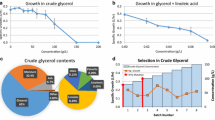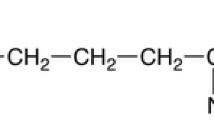Abstract
Genome shuffling is a recent development in microbiology. The advantage of this technique is that genetic changes can be made in a microorganism without knowing its genetic background. Genome shuffling was applied to the marine derived bacterium Nocardia sp. ALAA 2000 to achieve rapid improvement of ayamycin production. The initial mutant population was generated by treatment with ethyl methane sulfonate (EMS) combined with UV irradiation of the spores, resulting in an improved population (AL/11, AL/136, AL/213 and AL/277) producing tenfold (150 μg/ml) more ayamycin than the original strain. These mutants were used as the starting strains for three rounds of genome shuffling and after each round improved strains were screened and selected based on their ayamycin productivity. The population after three rounds of genome shuffling exhibited an improved ayamycin yield. Strain F3/22 yielded 285 μg/ml of ayamycin, which was 19-fold higher than that of the initial strain and 1.9-fold higher than the mutants used as the starting point for genome shuffling. We evaluated the genetic effect of UV + EMS-mutagenesis and three rounds of genome shuffling on the nucleotide sequence by random amplified polymorphic DNA (RAPD) analysis. Many differences were noticed in mutant and recombinant strains compared to the wild type strain. These differences in RAPD profiles confirmed the presence of genetic variations in the Nocardia genome after mutagenesis and genome shuffling.




Similar content being viewed by others
References
Anada TP, Abdul WB, Yogesh SS, Upal R, Jay S, Siddhartha PS (2006) Antimicrobial activity of marine bacteria from the waters off the coast of South East India. Microbiol Res 161:252–262
Cocconcelli PS, Porro D, Galandini S, Senini L (1995) Development of RAPD protocol for typing of strains of lactic acid bacteria and enterococci. Lett Appl Microbiol 21:376–379
EL-Bondkly AM (2002) Genetic transformation in Trichoderma reesei for the improvement of cellulase production. Tanta University, Egypt
EL-Bondkly AM, El-Gendy MMA (2010) Keratinolytic activity from new recombinant fusant AYA2000, derived from endophytic Micromonospora strain. Can J Microbiol 56:748–760
EL-Gendy MMA, Hawas UW, Jaspars M (2008) Novel bioactive metabolites from a marine derived bacterium Nocardia sp. ALAA 2000. Antibiotics 61:379–386
El-Sersy NA, Abou-Elela MG (2006) Antagonistic effect of marine Nocardia brasiliensis against the fish pathogen Vibrio damsela: application of Plackett-Burman experimental design to evaluate factors affecting the production of the antibacterial agent. Int J Oceans Oceanogr 1:141–150
Gong J, Huijie Z, Zhijun W, Tao C, Xueming Z (2009) Genome shuffling: progress and applications for phenotype improvement. Biotechnol Adv 27:996–1005
Hida H, Yamada T, Yamada Y (2007) Genome shuffling of Streptomyces sp. U121 for improved production of hydroxycitric acid. Appl Microbiol Biotechnol 73:1387–1393
Hopwood DA, Bibb MJ, Chater KF, Kieser T, Bruton CJ, Kieser THM, Lydiate DJ, Smith CP, Ward JM, Schrempf H (1985) Genetic manipulation of Streptomyces: a laboratory manual. The John Innes Foundation, Norwich
Kanzaki H, Yanagisawa S, Nitoda T (2000) Biosynthetic intermediates of the tetradehydro cyclic dipeptide albonoursin produced by Streptomyces albulus KO-23. J Antibiot 53:1257–1264
MingHua D, Shelley DC (2004) Genome Shuffling improves degradation of the anthropogenic pesticide pentachlorophenol by Sphingobium chlorophenolicum ATCC 39723. Appl Environ Microbiol 70:2391–2397
Mirabelli CK, Bartus H, Bartus JL, Johnson R, Mong SM, Sung SP, Crooke ST (1985) Application of tissue culture microtitre test for the detection of cytotoxic agents from natural products. J Antibiot 38:758–766
Patnaik R, Louie S, Gavrilovic V, Perry K, Stemmer WPC, Ryan CM, Cardayr′e S (2002) Genome shuffling of Lactobacillus for improved acid tolerance. Nat Biotechnol 20:707–712
Wang Y, Li Y, Pei X, Yu L, Feng Y (2007) Genome-shuffling improved acid tolerance and L-lactic acid volumetric productivity in Lactobacillus rhamnosus. J Biotech 129:510–515
Williams JGK, Kubelik AR, Livak KJ, rafalski JA, Tingey SV (1990) DNA polymorphisms amplified by arbitrary primers are useful as genetic markers. Nucleic Acids Res 18:6531–6535
Xu B, Jin Z, Jin Q, Li N, Cen P (2009) Improvement of pristinamycin production by genome shuffling and medium optimization for Streptomyces Pristinaespiralis. Biotechnol Bioproc Eng 14:175–179
Yu L, Pei X, Lei T, Wang Y, feng Y (2008) Genome shuffling enhanced l-lactic acid production by improving glucose tolerance of Lactobacillus rhamnosus. J Biotechnol 134:154–159
Zhang YX, Perry K, Vinci VA, Powell K, Stemmer WPC, Cardayr′e SB (2002) Genome shuffling leads to rapid phenotypic improvement in bacteria. Nat Lett 415:644–646
Zhanga Y, Jian-Zhong L, Jun-Sheng H, Zong-Wan M (2010) Genome shuffling of Propionibacterium shermanii for improving vitamin B12 production and comparative proteome analysis. J Biotechnol 148:139–143
Acknowledgment
The authors would like to thank Prof. Marcel Jaspars (Marine Biodiscovery Centre, Department of Chemistry, University of Aberdeen, Scotland, UK) for his continuous help and moral support with respect to technical discussion as well as the revision and editing of this manuscript.
Author information
Authors and Affiliations
Corresponding author
Rights and permissions
About this article
Cite this article
El-Gendy, M.M.A., EL-Bondkly, A.M.A. Genome shuffling of marine derived bacterium Nocardia sp. ALAA 2000 for improved ayamycin production. Antonie van Leeuwenhoek 99, 773–780 (2011). https://doi.org/10.1007/s10482-011-9551-8
Received:
Accepted:
Published:
Issue Date:
DOI: https://doi.org/10.1007/s10482-011-9551-8




